The Blue Beads:
Absorb Contaminants, Release the Future
The Challenge
Region Zealand, one of the 100 largest islands in the world has beautiful white cliffs, stunning stream that cuts through the middle part of Zealand, and other environmental charms. Those charms are what people appreciate in the past, today, and even in the future.
This island is heavily cultivated and largely forested. Also, this island is low-lying, it only rises maximum of 172m above the sea level. This topology provides high accessibility to groundwater resource. In fact, the drinking water supply is entirely dependent on groundwater and so does the water supplied for farmland.
General quality of deeper aquifers in Region Zealand is good with a continuous 100 million cubic meters recharge per year in average.
All sounds promising, yet there still are issues: People can’t be prepared for all potential threats to groundwater.
With many exhaustive researches and works, Region Zealand could come up with policies to manage many most troublesome contaminants there, specifically PFAS and many pesticides. However, there still are contaminants that do not have proper solutions. Furthermore, there can be new lethal contaminants in the future that people can’t come up with solutions in a timely manner.
Considering attributes of groundwater, more issues are found. The flow rate of groundwater is various considering geographical features. Groundwater flows 0.02m per day when it is in sand or gyttja(mud), 0.62m per day under the offshore[1] . However, the flow rate reaches up to 7.4m per day under lakebed [1]. That means, once contaminants dissolved in groundwater, we cannot really stop them from spreading.
Also, if we can find the point sources of pollution before the contaminants reach the mainstream of groundwater, we can save enormous costs; collecting polluted water from large area requires intensive effort and costs.
So what do we need, to continue our appreciation for the charms in the nature?
It would be time that we need. Time to postpone the spread of lethal contaminant that we may not know. Time to find unknown contaminants. And Time to find appropriate method to remediate those contaminants.
These are why we need “The Blue Beads” to “buy some time”.
Our solution: The Blue Beads
The Blue Beads are just tangible beads, but they are smart and functional. You can pour them over farmlands, just like fertilizers. They do not cause any harm for our health or that of the nature; they are made of biodegradable and nontoxic compounds.
Now, let’s see how the Blue Beads work.
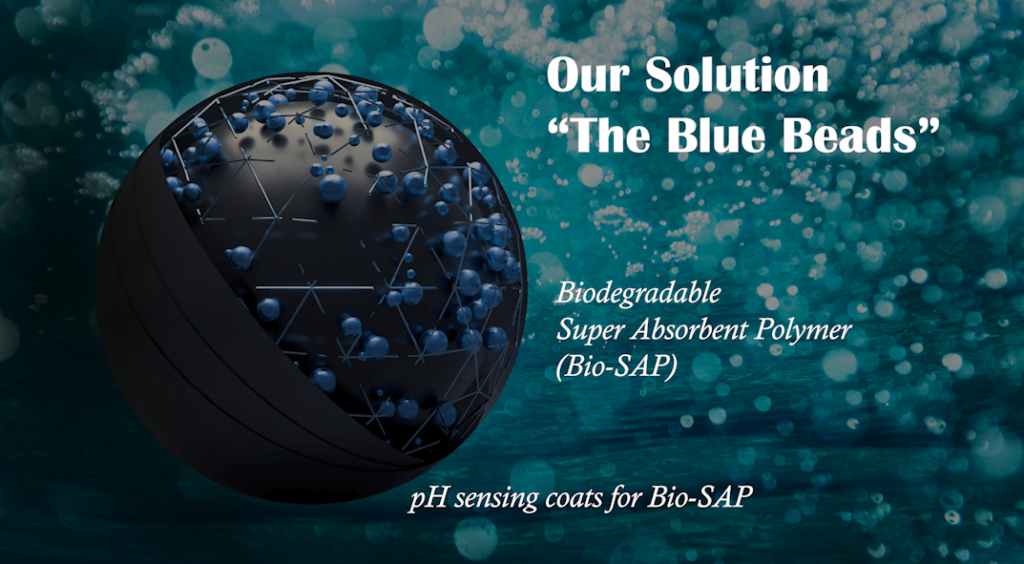
The Blue Beads are composed of two main components: Biodegradable Super-Absorbent Polymers (bioSAP) and pH sensing coats for bioSAP. This two-layered structure make the Blue Beads hold only the polluted water selectively.
Also, these main components are commercially available as bioSAP are already being used for agricultural industries to prevent plants from getting drained. In addition, many other various SAPs are found around us, such as diaper. pH sensing coats are also easily found, as they are already used for the outer shell of the capsule pills. Such commercial availability is important as it puts our solution in the “new application area”
Biodegradable Super-Absorbent Polymers
Super-Absorbent polymers can absorb and retain extremely large amounts (up to 1000 times larger volume of water compare to their volume) of water due to their molecular structure. The Blue Beads are filled with such material to hold the contaminated water before they reach the layer of groundwater. bioSAP is made of sodium carboxymethyl cellulose, which is derived from natural organisms [2]. In other words, bioSAP is environmentally friendly with low cytotoxicity.
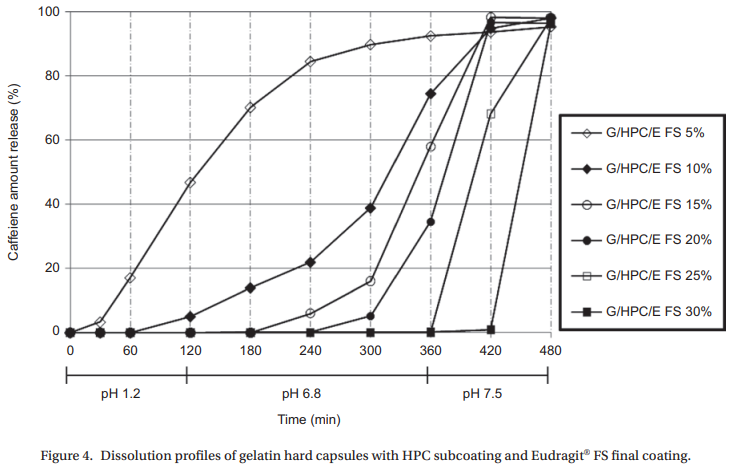
pH sensing coats for BioSAP
If we stack up bioSAP in groundwater to block the flow, it may stop the spread of contaminants yet would be inefficient and would cause multiple side-effects. So, we chose to coat the Blue Beads with pH dependent permeable structures called Eudragit® FS. Eudragit FS is developed for apharmacological usage, especially for a drug delivery system. Thus, this material is non-toxic and has flexibility in adjusting target specific pH in releasing bioSAPs [3].
Adding on the pH adjustment flexibility, The graph on the right side substatiates such argument. By adjusting variables in forming the coats, a detailed calibration of pH is possible and therefore various beads targeting different pH are available. Certainly, contaminants causing known amount of pH change and contaminants causing unknown amount of pH change can both be targeted by varying pH coats for the beads.
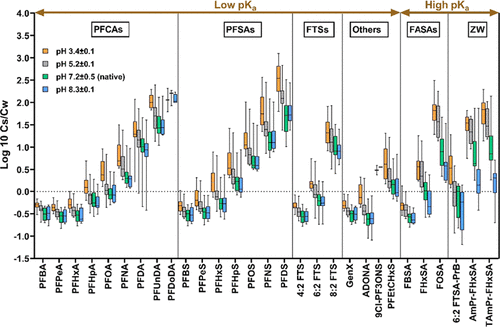
Effectiveness Assessment: Why we focus on pH?
The graph on the left side depicts 29 PFASs Kd value changes with four different pH solutions shown in the legend. Clearly, as pH increases, Kd value decreases [4]. In other words, when soil has lower pH, sorption of PFAS is facilitated. Being said, when soil reaches the target pH of the Blue Beads, accelerated infilteration of PFAS to groundwater will be prevented.
Also, metalic contaminants that might cause SO2 decomposition do vary pH of soil [5]. Therefore, it is evident that many toxic materials do change pH of soil when they damage soil conditions.
Thus, our method of capturing contaminated water for abnormal pH is certainly an effective method to get rid of lethal materials including PFAS before it damages groundwater and soil conditions. Also, this is why we can make the Blue Beads to absorb water with contaminants at the soil surface without actually placing the beads in groundwater layer.
To Understad Better: Story of Hans
To understand the Blue Beads better, let’s listen to the story of Hans.
Hans, a farmer living in Zealand, was informed that there is a new policy regarding the environment. The policy is about the Blue Beads that are supposed to be scattered over farmlands. The government set such policies to use the Blue Beads as preventative measure, yet they had used the Blue Beads to polluted lands as well to delay the spread of toxic materials. Hans, a law-abiding citizen, scattered the Blue Beads while he plowed his farmland.
One day, due to the old gas stations around his farmland, some aged facilities caused leakage of unknown contaminants and changed pH of the soil. Luckily, the Blue Beads absorbed those unknown contaminants and they stuck to the roots of the plants.
Hans heard the news regarding leakage from the gas station. Suddenly, He realized that his farmland was contaminated. So, Hans dug out the plants and collected the used Blue Beads from the roots. He returned those to us, the Blue Beads company.
Then, we extracted the liquid from those. We went through an analysis process to figure out whether there was an unknown toxic material. This time, we found a new lethal contaminant that needs to be addressed. Thus, with Region Zealand municipal, we could come up with new policies to handle such contaminants. With the Blue Beads, Hans, the Blue Beads company, and the government contributed to the sustainable groundwater conservation plan together.
SWOT Analysis
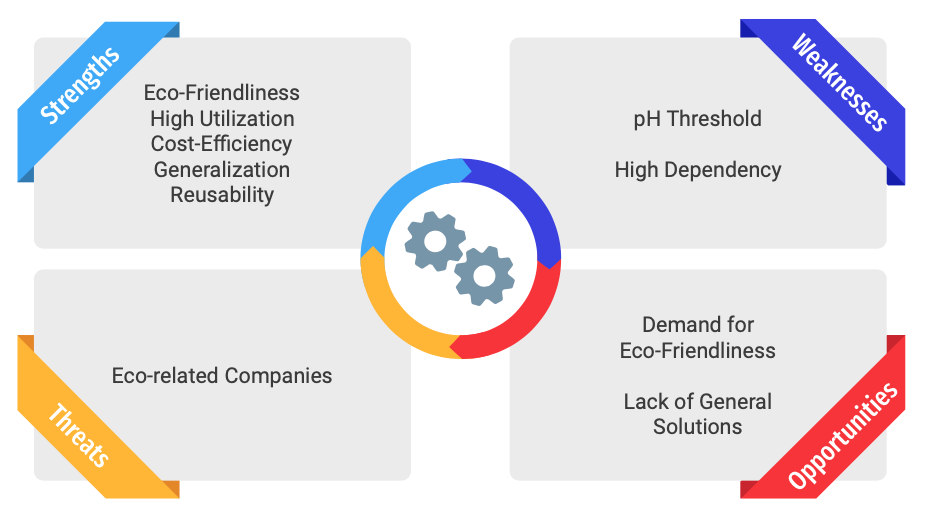
Strengths:
- Eco-friendly. BioSAP is biodegradable. pH sensitive coats are commonly used for pill coatings. Certainly, they are both safe for humans and the environment.
- High Utilization. BioSAP is in a powder form, which can be filled in any type of coatings. Therefore, various shapes and sizes of product can be composed.
- Cost-efficiency. Both BioSAP and pH sensitive coats are used at industrial level. (Retail Prices for the components: BioSAP costs $1.5/1kg and pill coating material costs $13/kg)
- General Solution for all water soluble contaminants. The Blue Beads provide a physical solution rather than a chemical solution. In other words, they can provide a process for all the contaminants regardless of their types.
- Reusability. SAP can go back to the powder form simply by drying it.
Weakness:
- Target pH might not be clear. The contaminants might not melt the coating due to the relatively high pH threshold.
- High Dependency to the Follow-up Technologies. The Blue Beads can hold the lethal material, yet it cannot remediate such material directly.
Opportunity:
- The growing demand for Eco-Friendliness. Groundwater is particularly difficult to purify, and therefore it is important to conserve it before it gets contaminated.
- Lack of General Solutions for Water Pollutions. Due to the low profitability, products addressing water remediation highly unlikely emerge in a form of consumer goods
Threat:
- As interest in water pollution is growing, the number of related companies is increasing.
Business Model
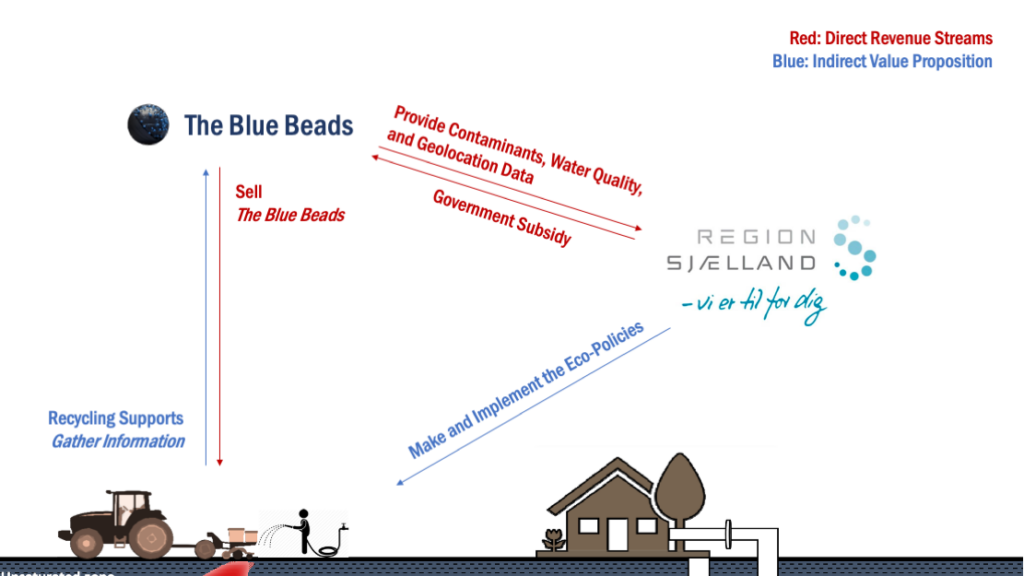
The Blue Beads form a virtuous cycle among us, the Blue Beads company, Region Zealand municipal, and consumers.
In that cycle, between us, the Blue Beads company, and consumers, we sell the beads to consumers to make a profit. Also, by collecting the used beads, we gain valuable information regarding contaminants, water quality, and soil quality.
Between Region Zealand municipal and us, region Zealand municipal will have access to the data we gathered from the beads. With such, the municipal will be able to propose effective and feasible policies for water conservation acts. We, the Blue Beads company might get some compensation from that cooperation.
Between region Zealand and consumers, consumers will be able to expect policies to facilitate their lives, and municipal will build constructive community there.
And the Canvas
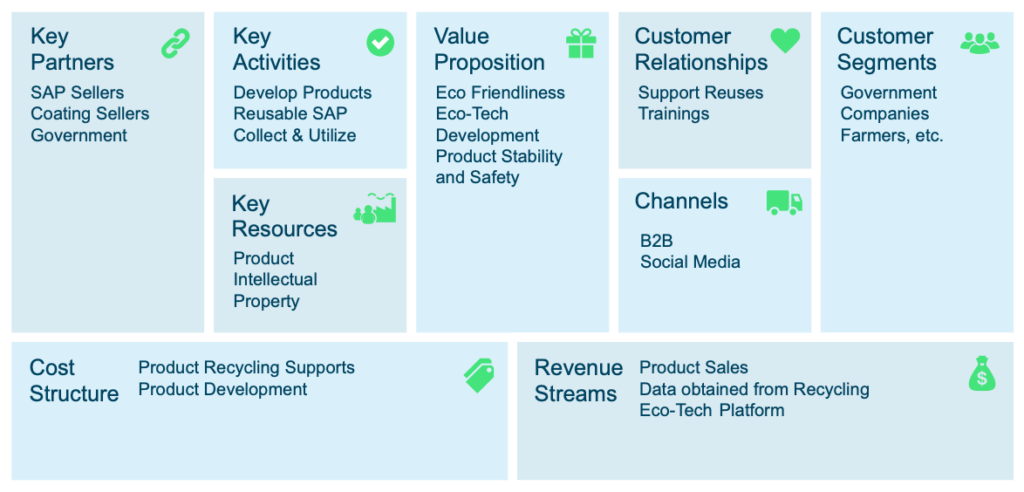
SDGs

No 3. Good Health and Well-Being: Water is everything for human life. Purifying water must be a core technology for Good Health and Well-Being.
No 6. Clean Water and Sanitation: Have Questions? Really?
No 9. Industry, Innovation, and Infrastructure: The Blue Beads are not just common industrial products. They establish a platform for material selling industries and the government, forming a scaffold for eco-tech improvement.
No 12. Responsible Consumption and Production: Being eco-friendly is not the only advantage that the Blue Beads hold; Product recycling is a key part of the Blue Beads production. The Blue Beads share and spread the idea of Responsible Production.
No 14. Life Below Water: Did you really think “Time Saving” would help humans only?
No 15. Life On Land: Did I say “Water is everything for human life”? Water is everything for all living organisms.
We are…
Team Whale!
Three students studying in South Korea who went to KAIST. We all have different majors, and such difference brought us creativity to come up with our original solution, the Blue Beads.
Contacts
We are on an intriguing journey! If you have any inquiries, feel free to reach us!

Dongeun Lee
santa3091@kaist.ac.kr
Biological Science

Youngwoo Shin
yshin0917@kaist.ac.kr
Electrical Engineering
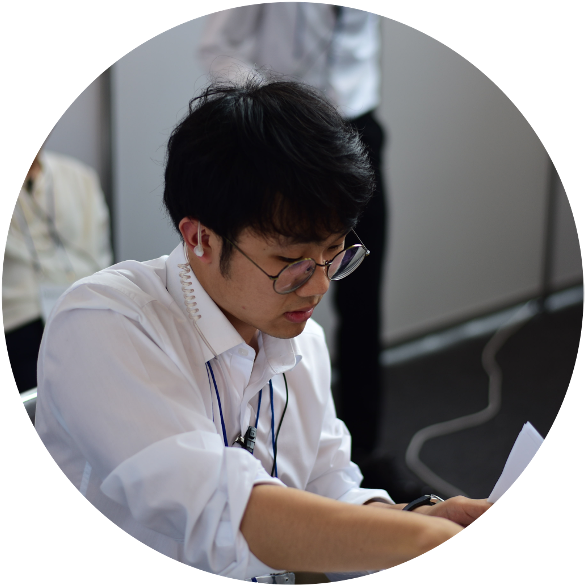
Juan Lee
juanlee@kaist.ac.kr
Computer Science
Reference
[1] J. Kazmierczak, D. Postma, S. Müller, S. Jessen, B. Nilsson, J. Czekaj, and P. Engesgaard, “Groundwater‐controlled phosphorus release and transport from Sandy Aquifer into Lake,” Limnology and Oceanography, vol. 65, no. 9, 2020, pp. 2188–2204.
[2] Jung, Jin-Hee, “Preparation of superabsorbent polymer based on biopolymer,” Chonnam National University, 2014.
[3] K. Dvořáčková, M. Rabišková, J. Muselík, J. Gajdziok, and M. Bajerová, “Coated hard capsules as the ph-dependent drug transport systems to ileo-colonic compartment,” Drug Development and Industrial Pharmacy, vol. 37, no. 10, 2011, pp. 1131–1140.
[4] Nguyen, Thi Minh, et al. “Influences of Chemical Properties, Soil Properties, and Solution Ph on Soil–Water Partitioning Coefficients of per- and Polyfluoroalkyl Substances (Pfass).” Environmental Science & Technology, vol. 54, no. 24, 2020, pp. 15883–15892.
[5] Zoltai, S.C. “Distribution of Base Metals in Peat near a Smelter at Flin Flon, Manitoba.” Water, Air, and Soil Pollution, vol. 37, no. 1-2.





